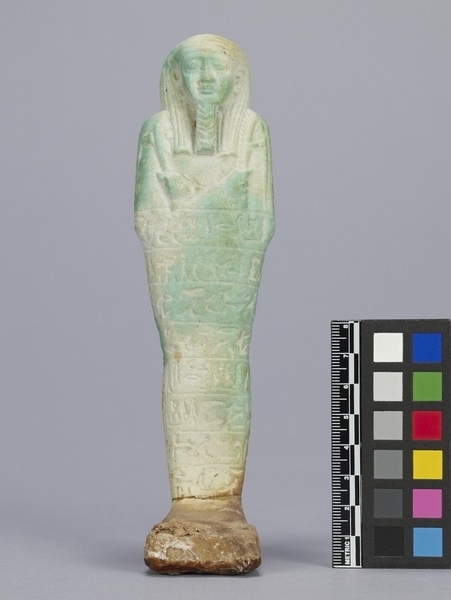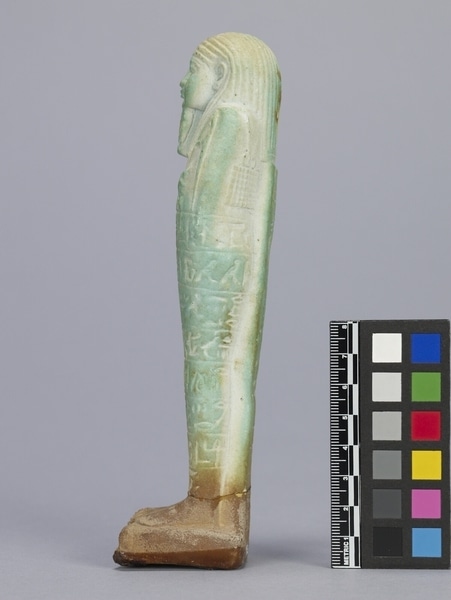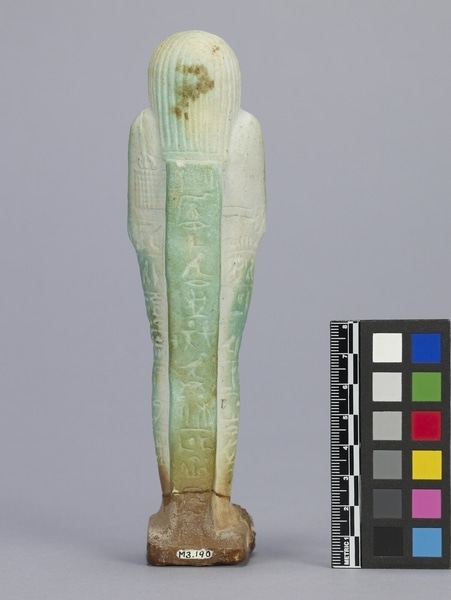Figure Item Number: M3.190 from the MOA: University of British Columbia




Description
Ushabti figure representing a mummy wearing a nemes headdress (striped head cloth) with a chin beard and crossed arms, and holding a sceptre in each hand. The body of the figure is carved with eight rows of hieroglyphs, and the figure is standing on a square base. A vertical band of hieroglyphs extends down the back of the figure. The figure is glazed with light green in some areas.
History Of Use
Ushabti are tomb figurines, they accompany the deceased as a servant in the afterlife.
Narrative
Collected by H. V. S. Page, who said it was from the tomb of an Egyptian General, Ankh-uah-ab-ra-sa-nit.
Specific Techniques
Egyptian faience was made by mixing quartz sand that had been powdered with an alkaline material, such as potash, and natron, a mineral containing sodium. When the mixture was heated to a sufficiently high temperature, a shiny surface formed. If copper was present in the mix, the surface would be a turquoise colour.
Item History
- Made in Egypt during 301 BCE
- Collected during 1923
- Owned by H. V. S. Page before 1963
- Received from H. V. S. Page (Donor) during 1963
What
- Name
- Figure
- Identification Number
- M3.190
- Type of Item
- figure
- Material
- faience
- Manufacturing Technique
- faience work
- Overall
- height 18.1 cm, width 4.8 cm, depth 4.0 cm
Who
- Culture
- Egyptian
- Previous Owner
- H. V. S. Page
- Received from
- H. V. S. Page (Donor)
Where
- Holding Institution
- MOA: University of British Columbia
- Made in
- Egypt
When
- Creation Date
- during 301 BCE
- Collection Date
- during 1923
- Ownership Date
- before 1963
- Acquisition Date
- during 1963
Other
- Item Classes
- ceramics
- Condition
- fair
- Current Location
- Case 101
- Accession Number
- 0100/0014